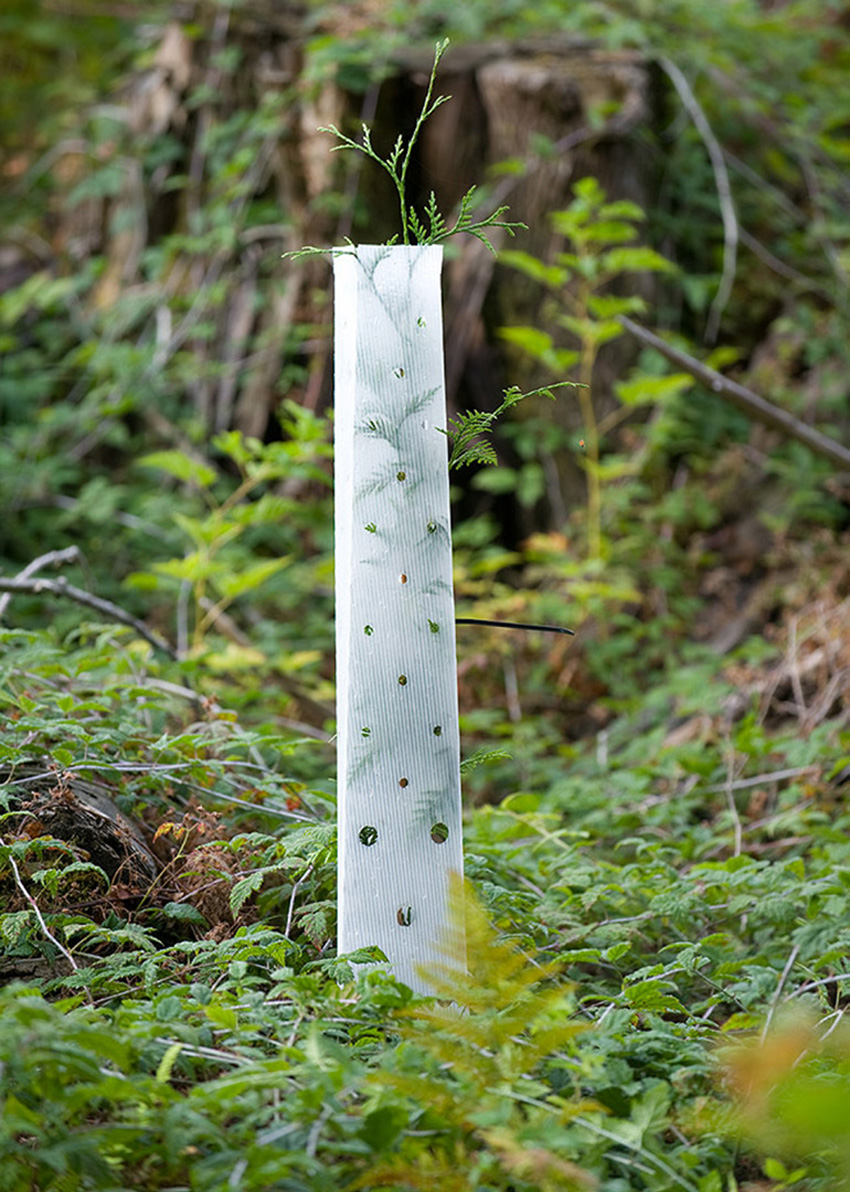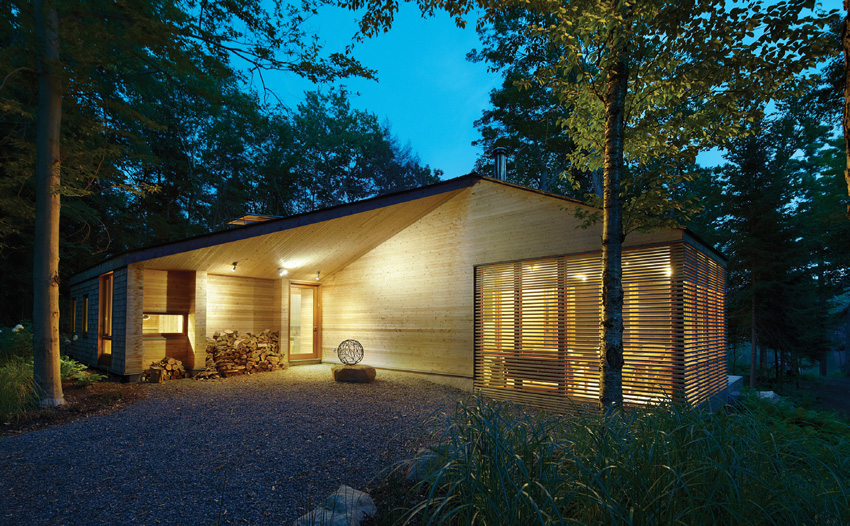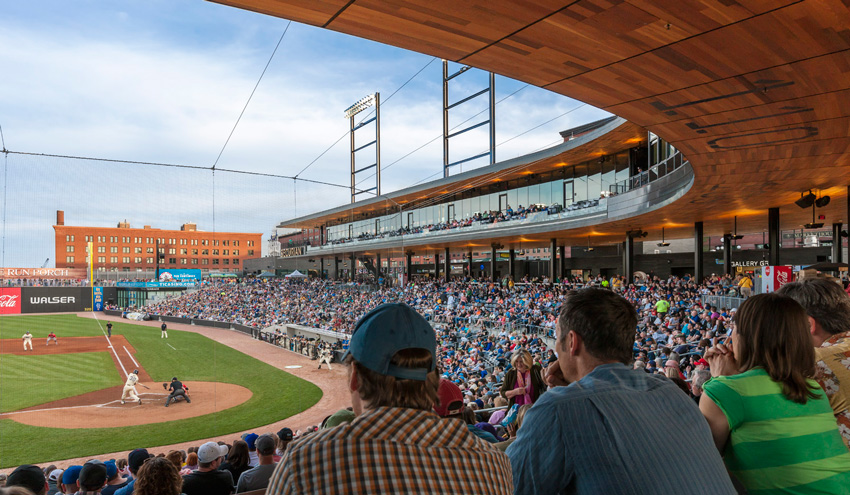Western Red Cedar
How Western Red Cedar Forests are Managed and Certified
Western Red Cedar is found in the province of British Columbia and grows nowhere else in Canada. Western Red Cedar was declared British Columbia’s official tree in 1988. More than 85 percent of timberland in British Columbia is certified by internationally recognized, independent, third-party forest certification agencies. The point of independent, third-party evaluations is to protect environmental values, such as biodiversity, soil, and water quality. Here’s how they work:

Photo courtesy of Western Red Cedar Lumber Association
More than 85 percent of timberland in the province of British Columbia is certified by internationally recognized forest certification agencies.
Evaluation: Forest companies operating in British Columbia must meet or exceed the high forest management standards demanded by government. In addition, they also have a high level of third-party certification, which gives customers added assurance that they are practicing responsible and sustainable forest management.
Environment: The forests are assessed according to rigorous, measurable, and scientific criteria that include ensuring protection of biodiversity and preserving soil and water quality.
Label and Chain of Custody: Forest products can include a label indicating they have been approved as environmentally friendly and a chain-of-custody system, which tracks a wood product from a tree in the forest through all the steps of processing and production until it reaches the consumer.
Canada is a world leader in the development and implementation of independent, third-party forest certification programs. That’s why Canadian manufacturers—in particular British Columbian Real Cedar producers—want their customers to have proof that their wood products meet the strictest of sustainability standards. Here, then, is a breakdown of the most trusted third-party certification agencies in the world:
International Standard Organization (ISO): This organization evaluates environmental management systems. Most of British Columbia’s major forest companies have certified ISO 14001 international environmental standards.
Canadian Standards Association (CSA): This association evaluates forest practices and performance using internationally recognized criteria that are adapted to local conditions through a transparent public participation process. It includes a product label and a chain of custody. The Council of European Paper Industries has ranked the CSA as among the best in the world, and the American Forest and Paper Association recognizes it as the functional equivalent of the Sustainable Forestry Initiative. By year end 2012, British Columbia had 24.7 million hectares (61 million acres) certified to CSA.

Image courtesy of Western Red Cedar Lumber Association.
In each set of bars, the product with the highest impact in that category is the benchmark (100%) and the other products are shown as a percentage relative to the benchmark. These are percentage values against a benchmark and not absolute values.
Sustainable Forestry Initiative (SFI): This initiative evaluates forest practices using a tough standard of environmental principles, objectives, performance measures, and core indicators. It is guided by an independent sustainable forest board and includes a product label. By year end 2012, British Columbia had 25.6 million hectares (63.3 million acres) certified to the SFI program.
Forest Stewardship Council (FSC): This council evaluates forest practices using 10 guiding principles adapted to local conditions using regional standards. It includes a product label and a chain of custody. By the end of 2012, British Columbia had 2.4 million hectares (about 5.9 million acres) certified to FSC.
American Tree Farm System (ATFS): Tree Farms are inspected and certified to assure proper forest management that includes the conservation of soil, water, and wildlife. ATFS is administered through a network of forest landowners, volunteer members of state and local committees and associations, national and state government agencies, inspecting foresters, forestry consultants, natural resource professionals, and private industry.
Western Red Cedar's LCAs and Comparisons with Other Products
Additional measurable indications of sustainability are included in each product’s life-cycle assessment (LCA). Measured against competitive, alternative non-wood building materials for residential decking and siding applications, the LCA performed by Canada’s leading forestry research laboratory, FPInnovations-Forintek, measured the environmental impact of various materials from cradle to grave. Complex analysis was conducted on Western Red Cedar, WPC decking, brick, fiber cement, and vinyl against a range of measurable factors, such as resource use, water use, energy use, transportation, and waste created. Western Red Cedar substantially outperformed in every category.
The LCA test results revealed:
- Western Red Cedar decking had by far the least environmental impact when compared with both virgin and recycled wood-plastic composite decking products.
- Environmental impact results remained strongly favorable to Western Red Cedar decking, even when comparing a worst-case scenario to a best-case scenario for composite decking.
- Western Red Cedar siding performed best overall in comparison with vinyl, fibercement, and brick.
In order to evaluate the environmental impacts of the life-cycle stages of siding and decking material alternatives, the life-cycle study was modeled as four distinct life-cycle stages: resource extraction and manufacturing (cradle-to-gate manufacturing), transportation to customer, installation and use, and end-of-life disposition (landfilling). Products were measured and evaluated against six criteria that include information about the environmental impacts associated with a product or service, such as raw material acquisition, energy use, carbon footprint, emissions to air, soil and water, and waste generation.
Pathways to LEED Certifications and Use of Legal Wood
The U.S. Green Building Council (USGBC) now encourages the use of construction products and materials carrying environmental performance information calculated using life-cycle assessment (LCA) through its LEED green building point system. The main driver of EPDs in North America is LEED; and new cedar EPDs (2016) contribute to LEED points. Products with third-party certification (Type III), including external verification, are valued as one-half of a point for purposes of credit achievement calculation.
Recently, the USGBC announced a new pilot alternative compliance path (ACP) credit for its LEED system that is designed to further advance environmentally responsible forest management and help rid buildings of illegal wood by promoting the use of wood that is verified to be legal.
The LEED pilot ACP builds on the robust infrastructure that has been built around responsible wood sourcing and chain of custody to test an approach to prerequisite requirements, which could serve as a model for other building materials.

Photo courtesy of Shai Gil Fotography
The use of sustainably harvested Western Red Cedar can contribute to green building points and certifications. This Stealth Cabin residence was designed by superkül.
This new pilot ACP is applicable to both LEED 2009 and LEED v4 systems. While LEED has always rewarded leadership in materials specification, this new ACP seeks to leverage LEED’s market power by focusing attention on the significant need for more comprehensive and effective legal verification of building products. The pilot ACP is designed to address a critical piece of the supply chain and reward project teams who proactively verify that the wood they are using is legal.
“Healthy, vibrant forests are an essential piece of life as we know it,” Rick Fedrizzi, former chief executive officer and founding chair, USGBC, stated in the press release. “LEED has made tremendous strides by promoting leadership on sourcing of forestry products. We want LEED to also be a significant driver for stopping illegal logging. As we have begun looking at approaches to incentivize responsible sourcing of all materials that go into our buildings—such as concrete, steel, copper, and other materials—we recognize the need to address both the top—rewarding the best—as well as the bottom by eliminating unacceptable practices.”
Over the past 15 years, the green building industry has invested a significant amount of resources related to responsible procurement of forest products, which have taken up the vast majority of the debate about raw materials sourcing.
“This focus of the green building industry on the various wood certification standards has produced measurable progress,” Fedrizzi added. “With the pilot ACP, we are increasing the scope of LEED related to wood with an eye toward possibly applying what we learn to other industries. Beyond this credit, LEED v4 takes steps to reward progress related to all raw materials sourcing issues and encourage all sectors to continue to improve.”
“Today, it is possible to achieve the LEED wood credit and still have illegal wood in a LEED certified project,” says Scot Horst, former chief product officer, USGBC. “This is because LEED projects receive credit for a percentage of the wood on the project, rather than on all wood used. LEED is a global standard with a vision of market transformation. Addressing the illegal wood issue in LEED projects, especially in projects outside of the United States, comes at a critical time both for the global issue of illegal logging and unfair forestry practices, and also for LEED and its growing influence.”










